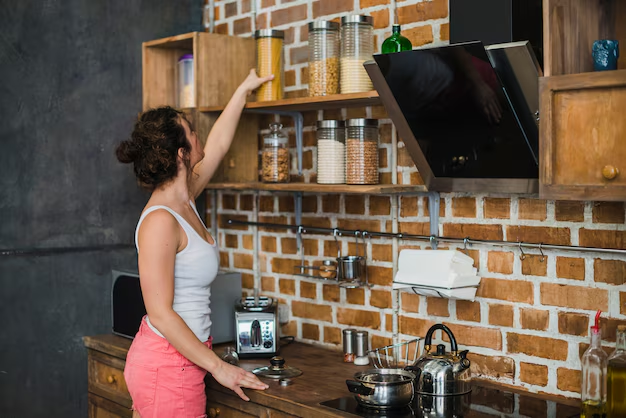When Was the Refrigerator Invented? Unraveling the Cool Story Behind Our Fridges
The refrigerator is a cornerstone of modern convenience that keeps our food fresh and drinks cold. Yet, many might be surprised to learn that the journey to inventing this household essential is a winding one filled with fascinating innovation. So, when was the refrigerator invented? Let’s refrigerate this question with a cool scoop into history, understanding not just when but how and why this game-changing appliance came to be.
The Birth of Cooling Concepts: Early Innovations
Before discussing the birth of the modern refrigerator, it’s crucial to acknowledge the many attempts to preserve food throughout history. From ice blocks to Victorian ice boxes, humanity has long strived to keep perishables from spoiling.
Ice Harvesting and Ice Boxes
Before the modern refrigerator, people relied on the natural environment to store food. Ice harvesting, a common practice in winter, involved cutting large blocks of ice from frozen lakes and ponds to store in well-insulated ice houses, which could keep food cool well into summer. Even during the 1800s, ice boxes were a staple in homes and resembled large wooden cabinets lined with zinc or tin and insulated with materials like seaweed or cork.
Cryogenics’ Humble Beginnings
Around the same time, scientific inquiry into gases and temperature control emerged. Experiments with gases like ammonia and ether showed promise in artificial cooling, laying groundwork for technological progress.
The Refrigerator Takes Shape: Key Milestones in Development
While many breakthroughs contributed to the creation of the refrigerator, a few pivotal moments stand out. Let's delve into essential milestones that marked the official invention journey.
Thomas Moore’s Ice Box Innovation
In 1803, American farmer Thomas Moore patented a more practical version of the ice box, paving the way for early cooling devices in homes and transportation. His invention stored perishable goods like butter for long hauls to markets, a step towards integrating cooling into daily life.
The Vapor Compression Refrigeration System
The mid-19th century saw transformative strides. In 1834, Jacob Perkins, an American engineer, built the first practical refrigerating machine. Perkins developed the vapor-compression refrigeration system, a principle still foundational in modern refrigerators. His design used rapidly expanding gases, enabling lower temperatures to keep food cold.
Carl von Linde’s Breakthrough
In 1876, Carl von Linde, a German engineer, took refrigeration a step further by developing an efficient and durable model working with liquefied gases. His contributions made refrigerators more accessible and viable on a larger commercial scale, effectively increasing their uptake.
The Great Leap: Commercial Refrigeration and Household Adoption
The turn of the 20th century marked a shift from industrial to household use. As innovations thrived, refrigerators began migrating from factories to kitchens.
The Rise of Industrial Refrigeration
Refrigeration technology found early success in industries, particularly businesses preserving food, such as breweries and meatpacking plants. By the late 1800s, these sectors reaped the benefits of large, safe, and efficient refrigeration systems.
Enter the Home Refrigerator
By the 1920s, the refrigerator's presence surged in homes across the United States. Frigidaire introduced the first self-contained unit in 1916, marking a new era of accessibility. As electrical infrastructure improved, refrigerators became more compact, efficient, and widespread, establishing its niche in home kitchens worldwide.
Advances in Modern Refrigeration Technology
From environmentally friendly coolants to smart fridges, modern refrigerators have evolved drastically since their inception. Here’s a look at current innovations shaping our cooling needs.
Eco-Friendly Coolants and Energy Efficiency
With growing awareness of environmental impact, newer refrigerators utilize CFC-free coolants, significantly reducing ozone layer depletion. Energy-efficient models consume less electricity, balancing performance and environmental responsibility.
Smart Refrigerators
The latest generation of refrigerators integrates technology, featuring internet connectivity for conveniences like inventory management, energy consumption tracking, and interactive features. These smart appliances redefine our approach to kitchen management and user interaction.
Understanding Refrigeration: Practical Use and Care
Operating a refrigerator isn’t just about plugging it in. Here are essential tips to maintain its efficiency and longevity.
Best Practices for Optimal Performance
- Temperature Management: Maintain an internal temperature of below 40°F (4°C) to prevent bacterial growth.
- Regular Cleaning: Periodically clean coils and replace door seals to improve energy efficiency.
- Mindful Organization: Arrange food items to ensure optimal air circulation
Troubleshooting Common Issues
Be proactive when facing common fridge issues:
- Inadequate Cooling: Check thermometers, coils, and air vents for obstructions.
- Noise Troubles: Ensure the refrigerator is level and examine the compressor or fan motor.
Key Takeaways 📝
Here’s a streamlined summary of essential insights to recall from this refrigerator exploration:
- Historical Roots: From ice storage to advanced cooling, the quest for refrigeration spans centuries.
- Milestone Innovations: Key figures like Thomas Moore and Carl von Linde played pivotal roles in refrigeration's development.
- Technological Evolution: Modern refrigerators boast eco-friendly designs and cutting-edge connectivity.
- Practical Tips: Regular maintenance extends appliance life and optimizes performance.
Explore the fascinating history and evolution of the refrigerator, and don’t forget the ongoing innovation shaping our chilled storage solutions. Whether you’re upgrading an existing unit or fascinated by industrial design, understanding the refrigerator's legacy enriches our appreciation of this cool convenience.
